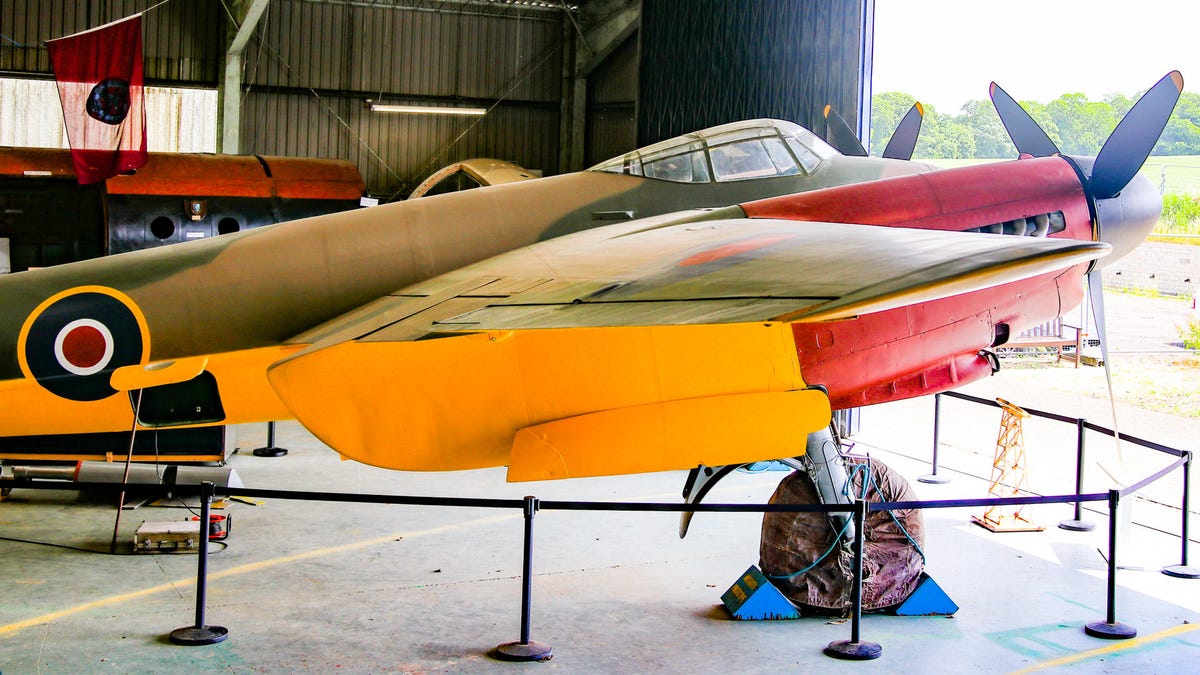 Why You Can Trust CNET
Why You Can Trust CNET Vixens, Vampires and Mosquitos: Legendary planes of the de Havilland Aircraft Museum
Geoffrey de Havilland was one of the most influential aircraft designers of the 20th century. Take a tour of the museum dedicated to his genius.

On the list of the most influential aircraft designers of the 20th century, Geoffrey de Havilland is on whatever short list you want to make. From biplanes to passenger jets, he's designed or helped design some of the most famous planes of the last 100 years.
Just north of London, in the village of London Colney, is a museum dedicated solely to his many designs: the de Havilland Aircraft Museum. It's located at Salisbury Hall, historical home of the de Havilland company's secret design and development center. Inside are dozens of his most famous, and in one case perhaps infamous, aircraft.
There's the prototype Mosquito, one of the best performing planes of World War II, the Vampire, one of the earliest jet fighters, the Comet, the first jet airliner, and many others. The Comet at the museum is the only remaining example with the original and disastrous square windows that caused several early crashes.
Most of the aircraft at the museum are open to visitors, so you can go inside and see how they appeared in their day. Have a look:
Climbing up on Salisbury Hall
If you don't have a car, the de Havilland Museum is a little harder to get to compared to some of the UK's other air museums. From London you need a train, a bus, and a short walk. Totally doable, though.
Once you arrive, you're greeted by a quirky Dove, a curvy post-war passenger plane. After you get your tickets, the museum itself is spread across several hangars. I made my way to the very end, the Water Goldsmith hanger, where the prototype Mosquito, along with two production models, all sit in gorgeous condition.
What's across from this hanger is perhaps even more interesting: an original, first-generation, Comet. If you've never heard of the Comet, it was the first passenger jet.
While a remarkable leap forward from propeller-based planes, the entire Comet fleet was sidelined by a series of deadly crashes. Three aircraft were selected for pressure testing to determine what was going wrong. The destruction of the first two was all that was needed to figure it out: the Comet's square windows were causing undue fatigue on the pressurized fuselage. The museum houses the only Comet with the square windows -- all others were refitted with round windows and put back into service.
The adjacent hanger has mostly older aircraft, like Tiger Moth biplanes, a gyrocopter, even the first-ever drone. Behind this hangar, passenger aircraft like the Heron, the DH125 business jet, and even the body of a regional passenger jet, a BAe 146, all sit waiting for you to explore.
Those deadly square windows.
Vixens, Vampires, Mosquitos and Moths
Though not huge, the de Havilland Museum has an excellent collection of aircraft, and it was especially fascinating to see the square-windowed Comet, up close, inside and out. Even better was how knowledgeable and friendly the volunteers were, willing to answer any and all questions I had about the various aircraft.
The de Havilland Aircraft Museum is open every day but Monday, 10:30 a.m. to 5 p.m. Entry is £12/$15.85US/$21.40AUD. Check out the gallery above if you want a look around without a trip to Britain.
As well as covering audio and display tech, Geoff does photo tours of cool museums and locations around the world, including nuclear submarines, aircraft carriers, medieval castles, epic 10,000-mile road trips and more.
Also check out Budget Travel for Dummies, his travel book, and his bestselling sci-fi novel about city-size submarines. You can follow him on Instagram and YouTube.

